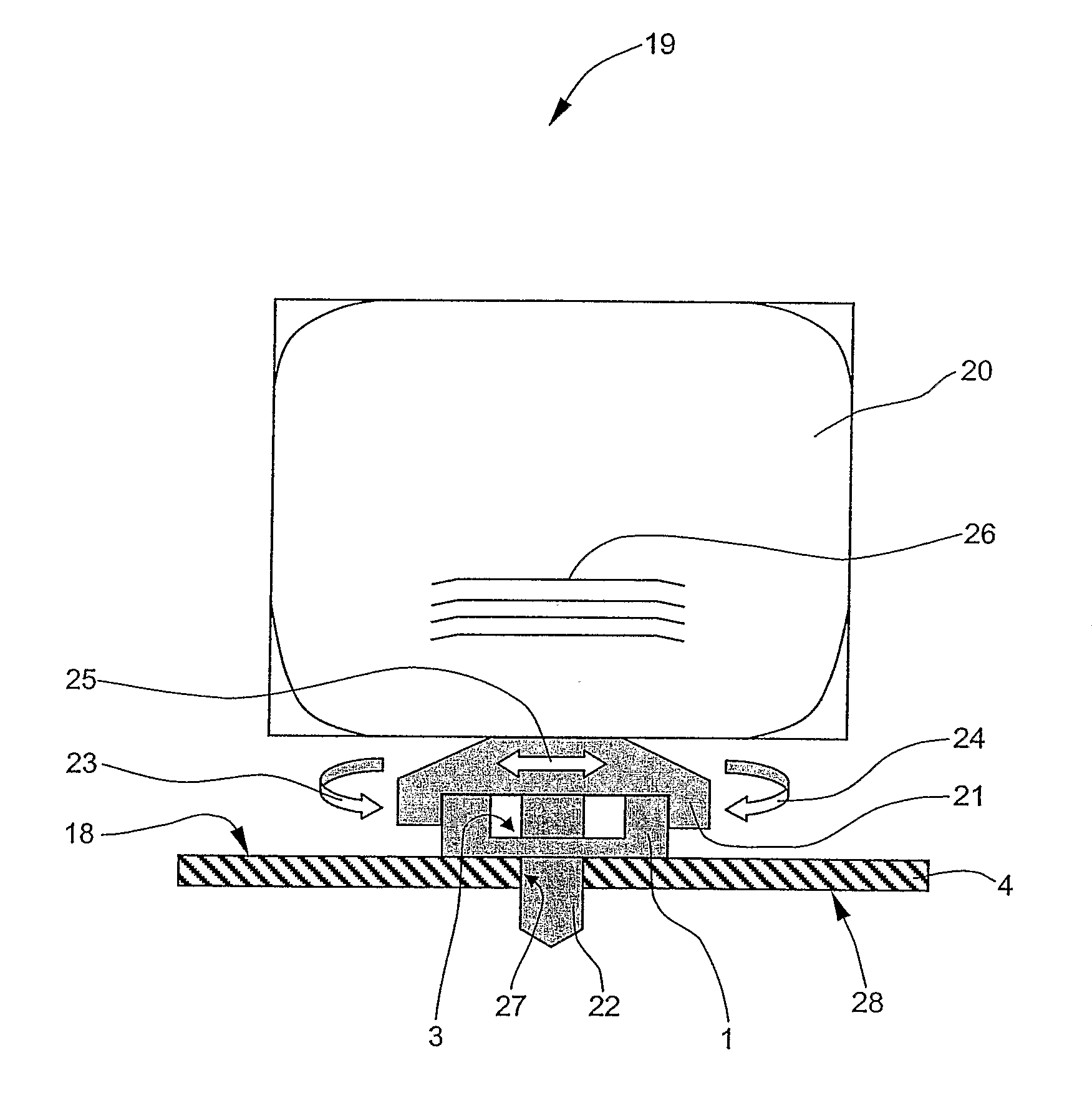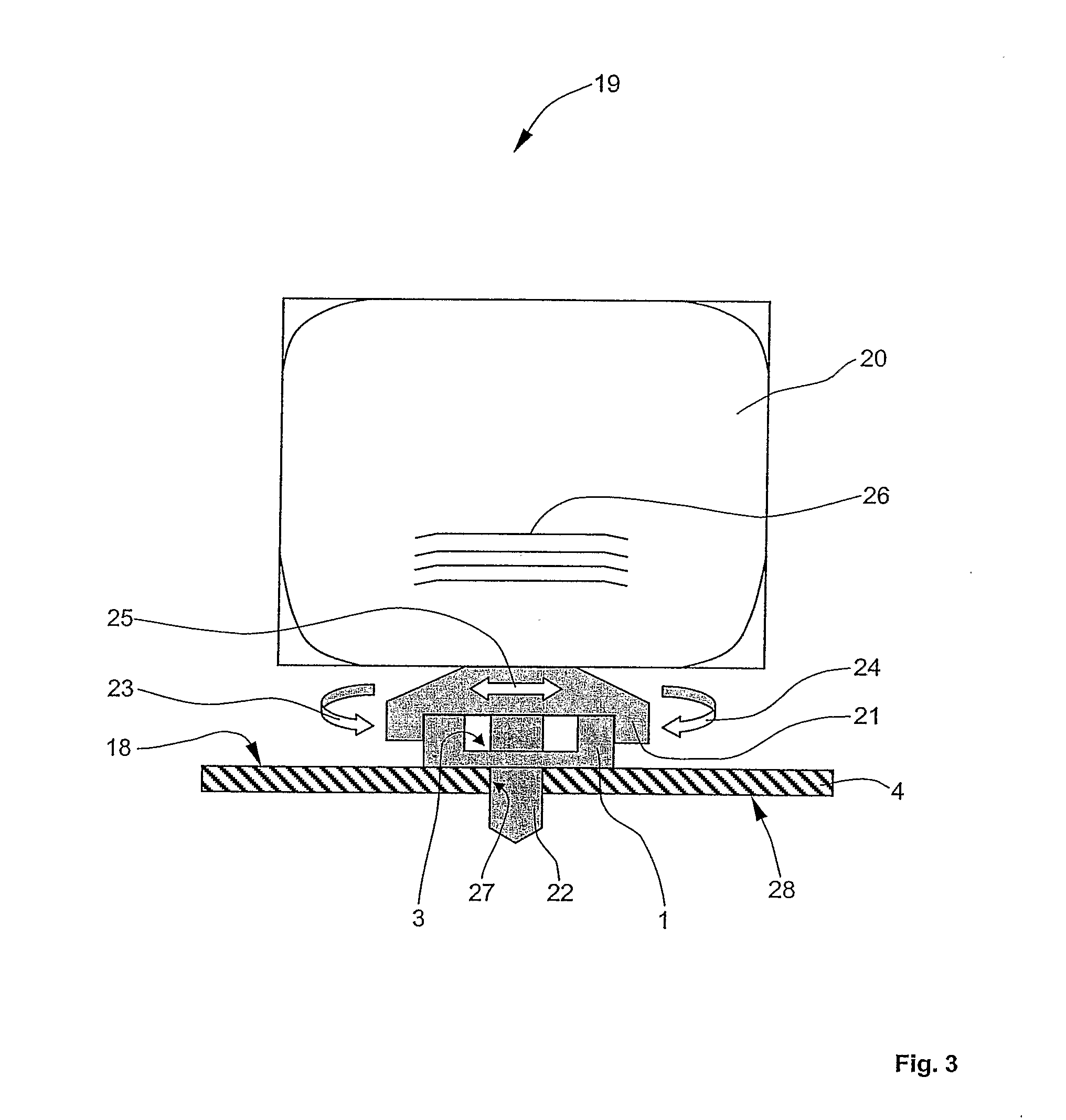Method for Joining a First Component Formed of a Plastic Material to a Second Component, and Joining Element and Device
a technology of plastic material and first component, applied in the direction of threaded fasteners, bolts, mechanical equipment, etc., can solve the problems of screw, rivet, and other components or components realized in plate-shape, and achieve the effect of reducing delamination as well as corrosion processes, and simple and fast junction production
- Summary
- Abstract
- Description
- Claims
- Application Information
AI Technical Summary
Benefits of technology
Problems solved by technology
Method used
Image
Examples
Embodiment Construction
[0029]FIG. 1 shows a top view of the inventive joining element.
[0030]The joining element 1 comprises among other things a supporting plate 2, preferably realized to be circular, into which a supporting plate bore 3 is incorporated approximately in the middle. The supporting plate 2 can also have a geometric shape which differs from the circular shape. The supporting plate 2 is joined to the first component 4 by a weld joint.
[0031]In order to enable a weld joint between the first component 4 and the supporting plate 2 of the joining element 1, the supporting plate 2 is formed according to the invention of a thermoplastic plastic material, which additionally can have fiber reinforcement. The supporting plate 2 can e.g. be formed of a plastic material, such as polyetheretherketone (PEEK), polyetherimide (PEI), or the like.
[0032]Alternatively, it is also possible to form the supporting plate 2 of a thermosetting material, wherein a bottom side of the supporting plate 2, which cannot be ...
PUM
| Property | Measurement | Unit |
|---|---|---|
| frequency | aaaaa | aaaaa |
| frequency | aaaaa | aaaaa |
| time | aaaaa | aaaaa |
Abstract
Description
Claims
Application Information
 Login to View More
Login to View More - R&D
- Intellectual Property
- Life Sciences
- Materials
- Tech Scout
- Unparalleled Data Quality
- Higher Quality Content
- 60% Fewer Hallucinations
Browse by: Latest US Patents, China's latest patents, Technical Efficacy Thesaurus, Application Domain, Technology Topic, Popular Technical Reports.
© 2025 PatSnap. All rights reserved.Legal|Privacy policy|Modern Slavery Act Transparency Statement|Sitemap|About US| Contact US: help@patsnap.com



